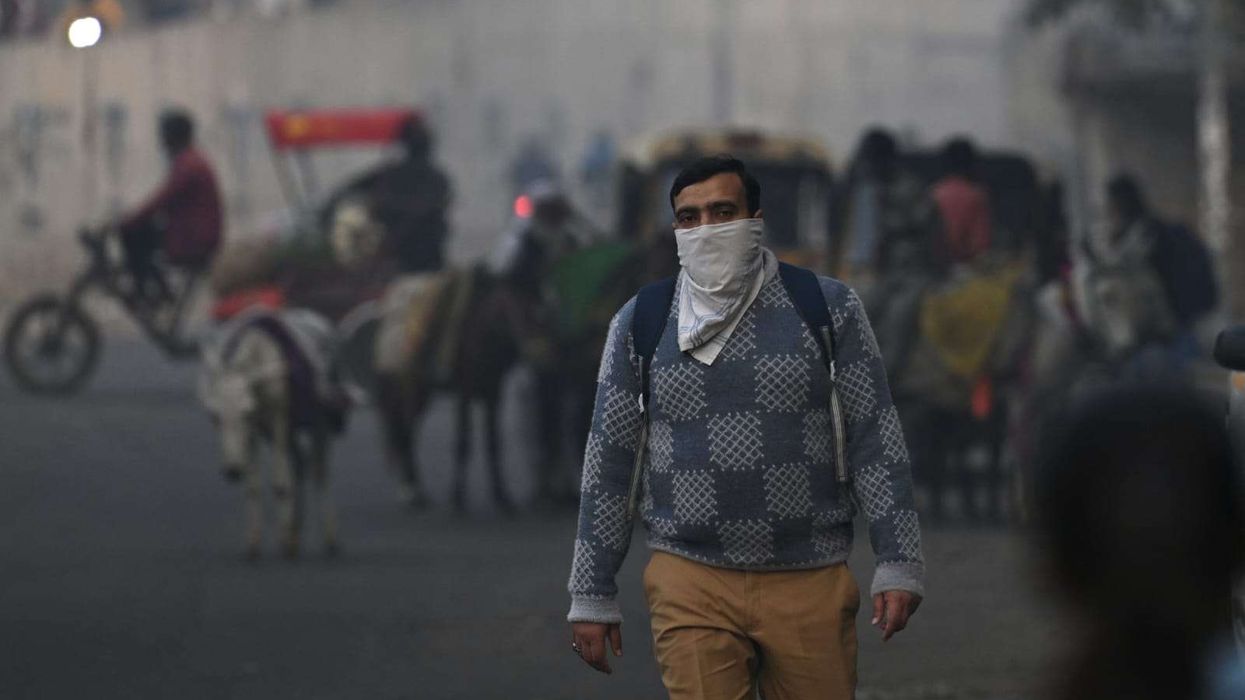YOUNG Asian children who face family pressure and subsequently are forced to marry strangers from the subcontinent could be vulnerable to committing suicide, charities have warned.
Findings by the NSPCC have shown a 12 per cent rise in calls concerning forced marriage, compared to last year.
Aneeta Prem, founder of Freedom Charity, which aims to prevent forced marriage and dishonour against young people, said it was vital to help those who are pressured into marrying because of parental compulsion.
“Young Asian girls are three times more likely than any other group to commit suicide between the age of 16 and 24,” Prem told Eastern Eye on Tuesday (1).
The National Society for the Prevention of Cruelty to Children (NSPCC) reported that girls as young as 13 have been using their counselling services to report incidents of being forced into marriage.
There were 205 calls to the Childline helpline for counselling services regarding forced marriage in 2016/17, whereas in 2011/12, only 55 calls were recorded. In 2016/17, there were 6,099 visits to the online Childline forced marriage page.
NSPCC chief executive Peter Wanless said: “No child should be forced into marriage and we must be clear that, regardless of cultural expectations, this is a crime and an abuse of human rights.
“Forcing a child to marry shows a complete lack of regard for their feelings, thoughts or ambitions.”
One 17-year-old girl described her ordeal of being forced to marry to counsellors at the NSPCC, saying “[she] never wanted any of this.”
“My friends are being supportive, but I can’t talk to my mum about it as she thinks he’s the best thing for me and told me that if I end the marriage she won’t speak to me ever again. I’ve never even met him.”
Another girl, aged 18, told Childline that her parents got violent with her when she doesn’t do what they want her to do. “My parents are talking about taking me back to my home country to get married, but I don’t want to. I want to leave home but they’d never agree to it. I just want to live a normal teenage life, but they won’t let me,” the teenager said.
Other young victims reportedly told counsellors that their families pressured them into marriage, as it would bring “shame and dishonour” on them if they did not comply with their wishes. Some also had concerns that relatives would be punished if they reached out for support.
It is this sort of pressure from families that can lead to depression and risk of suicide, charities and campaigners have cautioned.
With the school holidays underway, there is additional concern that children are more likely to be at risk of forced marriage, as families plan vacations in south Asia – some with the intention of getting the children married.
“In some instances children may have been told that they are going on a normal holiday and do not realise that they are heading to their wedding day with a complete stranger. Once they are abroad they may find themselves isolated and find it difficult to raise the alarm and halt the marriage,” the NSPCC reported.
Freedom Charity founder Prem said “I think the key thing is knowing that if someone has gone missing this summer, then you have to say something because the likelihood of them not coming back is extreme. If they haven’t consented to it, then you’re subjecting a young person to a life of abuse.”
Children who have been forced into marriage could experience trauma because they are trapped in a loveless marriage, having lost their childhood and also being exposed to physical and sexual abuse.
The rise in calls to the confidential helpline may be due to potential victims becoming more aware of the practice and what kind of help is available to them.
Organisations such as Freedom Charity work with a large number of young people within schools, colleges and university to raise awareness of the dangers concerning the issue.
Freedom Charity have also launched the Freedom Charity App, which can aid users in finding ways to speak to counsellors who can give them advice and offer help.
Prem, who also works as an author, said that part of the reason why she set up the charity was due to a young Asian girl that she knew who committed suicide after being forced into marriage.
“That was one of things when I was setting up the charity - I hadn’t really put into my consciousness why, but it had obviously affected me.”
The campaigner has urged anyone who is worried about a friend or relative who is potentially being forced into marriage to speak up. She also warned that if someone has discussed being depressed or wanting to kill themselves, this is a key warning sign and should be taken seriously.
“You have to do something because you can’t wait – someone could do this at any time. It isn’t a cry for help, it is a cry of someone who is absolutely terrified of being forced into a marriage,” she added.
The Anti-social Behaviour, Crime and Policing Act made it a criminal offence to force someone to marry in 2014. Since 31 December 2016, figures show that only one conviction has been carried out regarding forced marriage.
A spokesperson for the Home Office said: “Forced marriage is an abhorrent practice that this Government is determined to tackle. We know this is a hidden crime and we are encouraged that more victims are coming forward.
“We made forced marriage a criminal offence in 2014 and are encouraged by the first conviction, but we know there is much more to do. We will continue to work with the police, Crown Prosecution Service and others to drive progress.”
In 2016, the Forced Marriage Unit (FMU) reported that they gave advice and support in 1,428 cases that were linked to a possible forced marriage. Of these, 26 per cent of the victims were below 18 years of age, whilst 34 per cent involved victims aged between 18-25.
Earlier this year, lifelong anonymity was introduced to victims to help encourage more to come forward and report this type of crime.
Anyone who is worried about a child who could be a potential victim of forced marriage can contact the NSPCC helpline on 0808 800 5000.
For more information about the Freedom Charity, access their website at https://www.freedomcharity.org.uk/











